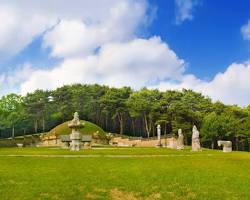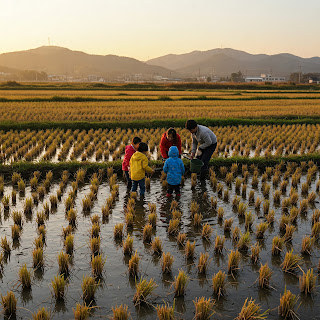#MachineCivilization #DigitalAge #Humanity #Alcohol #FamilyValues #Humanities #SEO #TechnologyImpact #HumanConnection #ModernLifeChallenges
In our rapidly evolving digital age, the pervasive influence of technology touches every facet of our lives.
From the intricate algorithms that drive financial markets to the sophisticated artificial intelligence powering our devices, machines have become indispensable tools.
Yet, amidst this technological revolution, fundamental questions about human value, connection, and the very essence of our existence arise.
Are we, as humans, in danger of being overshadowed by the very tools we have created?
Consider the high-stakes world of Wall Street in New York City.
Here, fortunes are made and lost in fractions of a second.
To gain a competitive edge, traders invest vast sums in cutting-edge computer systems, all in the pursuit of executing buy and sell orders milliseconds before their rivals.
This relentless pursuit of speed and efficiency, driven by technological prowess, highlights the intense competition that characterizes the modern economy.
However, it also begs the question: in this race against machines, what becomes of human intuition, experience, and the nuanced understanding that goes beyond mere data processing?
While the efficiency and tireless nature of machines, particularly computers, are undeniable assets, their capabilities remain confined to the realm of quantifiable data.
They excel at executing instructions without complaint, processing vast amounts of information with remarkable speed and accuracy.
However, the ability to navigate complex, ambiguous situations, to exercise sound judgment based on a multitude of intangible factors, and to connect with others on an emotional level remains a uniquely human domain.
The limitations of artificial intelligence become apparent when comparing its performance in different types of games.
In games like chess, where the rules are fixed and the optimal strategies can be computationally analyzed, computers have achieved dominance.
However, in the ancient game of Go, with its vast complexity and the importance of strategic intuition, human players still hold their own.
This stark contrast underscores the fact that while machines can excel in rule-based systems, they struggle with the unpredictable nature of the real world and the multifaceted decision-making that humans possess.
Ideally, we should strive for a symbiotic relationship with technology.
Machines should handle the laborious and repetitive tasks, freeing up human potential for creative endeavors, innovation, and the cultivation of our inherent human qualities.
The development of empathy, critical thinking, and ethical reasoning should be our primary focus.
Unfortunately, our current trajectory often sees us becoming increasingly reliant on technology in areas that demand human connection and nuanced understanding.
The world of finance, particularly the stock market, often blurs the lines between investment and speculation.
For many, it can feel like a zero-sum game, where one person's gain is another's loss.
This perception echoes the sentiments found in ancient literature, where warnings against excessive greed and the pursuit of wealth at the expense of others are prevalent.
Instead, the emphasis is often placed on earning justly and sharing one's resources with the community. In this context,
Sima Qian's "Biographies of Wealthy Individuals" from the Records of the Grand Historian stands out as a unique text that delves into the practical methods of wealth accumulation while still offering insights into the human condition.
The impact of our increasingly automated and often impersonal world can be seen in various societal issues.
The alarming prevalence of drunk driving incidents, including hit-and-run cases, and the disregard for emergency vehicle right-of-way highlight a potential erosion of empathy and social responsibility.
These incidents, often fueled by impaired judgment and a sense of detachment, serve as stark reminders of the human element that technology alone cannot replace.
The approaching Lunar New Year, a time traditionally associated with family gatherings and togetherness, can also be a source of stress and conflict.
The disproportionate burden of food preparation often falls on women, leading to resentment and strained relationships.
This highlights the importance of recognizing and valuing the emotional labor involved in maintaining family harmony, something that technological efficiency cannot address.
The significance of a nurturing and supportive home environment cannot be overstated.
After a demanding day, returning to a place of comfort and understanding is crucial for our well-being.
A home should be more than just a physical structure; it should be a sanctuary for rest, rejuvenation, and the cultivation of future aspirations.
The warmth of familial bonds and the feeling of mutual support are powerful motivators, inspiring us to face the challenges of the world with renewed vigor.
However, when the home environment becomes a source of tension and negativity, it can have a profound impact on our overall well-being. In such situations, the temptation to seek solace in temporary escapes, such as alcohol, can be strong.
While a drink might offer fleeting relief, it rarely addresses the underlying issues and can, in fact, lead to more serious problems, such as drunk driving.
Ultimately, the challenges posed by our increasingly machine-driven civilization and the resulting impact on human connection and values necessitate a deeper exploration of what it means to be human.
The resurgence of interest in the humanities reflects this fundamental need for introspection.
By engaging with philosophy, literature, history, and other humanistic disciplines, we can gain valuable insights into the complexities of human nature, the importance of ethical considerations, and the enduring values that should guide our interactions in a technologically advanced world.
Instead of solely relying on technological solutions or seeking temporary comfort in external substances, we must actively engage in the ongoing quest to understand ourselves and our place in this rapidly changing world.
The answers to navigating the shadows of machine civilization and rediscovering the essence of our humanity lie not just in technological advancement, but in a renewed commitment to fostering human connection, empathy, and a deeper understanding of the human spirit.
#MachineCivilization #DigitalAge #Humanity #Alcohol #FamilyValues #Humanities #SEO #TechnologyImpact #HumanConnection #ModernLifeChallenges #EthicalTechnology #HumanValues #DigitalWellbeing
Internal Link:
Outernal Link:








.png)

































